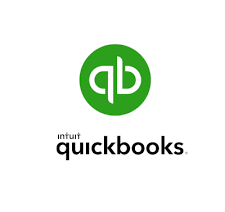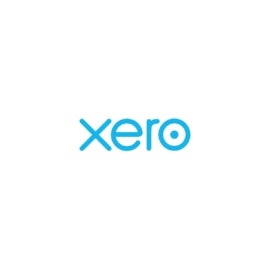- Best small-business accounting software: QuickBooks Online
- Best for invoicing: FreshBooks
- Best inventory management: Xero
- Best free accounting plan: Wave Accounting
- Best for midsize businesses: Sage Intacct
- Best for growing businesses: Zoho Books
Software Spotlight: Sage IntacctTransform your financial decision-making with multi-dimensional cloud accounting, payroll and HR that grows with your business.
|
Whether you’re a freelancer working from home or a small-business owner with five or so employees, recording financial business transactions is fundamental to your potential for success. But out of the dozens of excellent accounting software options on the market, which one is the best for your business?
Intuit QuickBooks Online is the best accounting software for many small businesses — potentially including yours. However, if QuickBooks doesn’t have the starting price or features you’re looking for, an option like Xero, Wave or Zoho Books could work for you instead.
Below, we break down the six best accounting software platforms for small businesses by features, pricing, pros and cons.
Best accounting software for small businesses: Feature comparison table
| Feature | Starting price | Free trial | Third-party integrations | User limit | Our star rating |
|---|---|---|---|---|---|
| QuickBooks Online | $35/mo. | 30 days (or 50% off for three mos.) | 750+ | Up to 25 users | 4.6 out of 5 |
| FreshBooks | $19/mo. | 30 days | 100+ | Unlimited* | 4.1 out of 5 |
| Xero | $20/mo. | 30 days | 1,000+ | Unlimited | 4.4 out of 5 |
| Wave Accounting | $0/mo. | N/A | Through Zapier only | Unlimited (with paid plan only) | 4.0 out of 5 |
| Sage Intacct | Custom | None | Limited | Unlimited* | 4.6 out of 5 |
| Zoho Books | $0/mo. | 14 days | Limited | Unlimited* | 4.7 out of 5 |
Plan details are up to date as of 2/22/2024.
*Additional users may cost an extra fee per month.
Featured Partners
The top small-business accounting software
QuickBooks Online: Best small-business accounting software

Our star rating: 4.6 out of 5
Intuit QuickBooks Online is a fully featured, double-entry online accounting system that can be adapted to fit just about any small business’s needs. The software platform provides extraordinary levels of help and support, ranging from basic online tutorials to personal consultations with professional bookkeepers.
Why we chose it:
While QuickBooks Online’s more expensive plans have enough features for enterprise-level accounting, its cheaper plans also help small businesses by shielding them from bookkeeping and financial transaction jargon. This user-friendliness means just about any business owner, regardless of their financial accounting acumen, can benefit from QuickBooks’ accounting software.
Pricing
QuickBooks Online has one of the highest starting prices of any accounting software provider. As a point in its favor, though, QuickBooks does clearly list the price of each plan online, which isn’t true for all accounting software companies:
- QuickBooks Simple Start: $35 per month with access for one user.
- QuickBooks Essentials: $65 per month with access for up to three users.
- QuickBooks Plus: $99 per month with access for up to five users.
- QuickBooks Advanced: $235 per month with access for up to 25 users.
As a first-time QuickBooks customer, you can choose to explore QuickBooks without committing to a plan by signing up for a 30-day free trial. You can also skip the free trial in favor of locking in 50% off for your first three months.
Top accounting features
- Unlimited invoicing.
- Mileage tracking.
- Receipt scanning and uploading.
- Expense tracking and tax categorization.
- Unlimited estimates.
- Excellent mobile accounting app.
- 1099 contractor management, including Form 1099 creation and filing.
- Sales tax tracking.
- Tax deduction maximization.
More advanced QuickBooks Online features include bill pay, time tracking, inventory management, profitability forecasting by project, batch invoicing and more.
Integrations: QuickBooks syncs with more than 750 third-party apps, including Square, Etsy, PayPal and QuickBooks Time. Its top payroll integrations include QuickBooks Payroll and Gusto.
Pros
- Free guided software setup (not available with free trial).
- Wide-ranging features that support freelancers and enterprises alike.
- Four plans for easy scalability.
- Seamless syncing with Intuit apps like QuickBooks Payroll and third-party apps like Gusto.
- Extremely user-friendly software.
- Access to a comprehensive network of QuickBooks-trained accountants and bookkeepers.
Cons
- More expensive than most competitors.
- Poor customer service reputation.
- Comparatively frequent price increases with little to no warning.
Learn more about how QuickBooks works by reading our QuickBooks Online review.
FreshBooks: Best for invoicing

Our star rating: 4.1 out of 5
FreshBooks’ invoice-centric accounting plan focuses on features for freelancers who provide services rather than freelancers who sell products. Its collaboration tools include a client portal where FreshBooks users can interact with their customers, easily sending estimates, invoices and payment reminders.
FreshBooks’ professional invoicing templates are easy to create, customize and share with clients. Users can also use FreshBooks to track time and expenses and then sync that data to an invoice to ensure they’re paid accurately for their time. Invoices can be made recurring for recurring customers, and FreshBooks’ users can also schedule automatic charges for overdue invoices and automatic late-payment reminders.
Why we chose it:
It’s hard to find accounting software with a more user-friendly interface than FreshBooks. FreshBooks’ guided setup wizard simplifies complicated concepts to ensure brand-new business owners with no accounting experience can send their first invoice and start tracking expenses as quickly as possible.
Additionally, while FreshBooks’ invoicing features make it best for freelancers, its mid-tier plan can support midsize businesses and its custom plan works for smaller enterprises located in the U.S.
Pricing
FreshBooks has four accounting plans, including one geared toward freelancers, two for small and midsize businesses, and one for enterprises:
- FreshBooks Lite: $19 per month. Includes unlimited invoicing to five clients per month.
- FreshBooks Plus: $33 per month. Includes unlimited invoicing to 50 clients per month.
- FreshBooks Premium: $60 per month. Includes unlimited invoicing to an unlimited number of clients per month.
- FreshBooks Select: An enterprise-level plan with custom pricing only. Includes unlimited invoicing to an unlimited number of clients per month.
New customers can also lock in a 10% discount by paying for a plan yearly instead of month to month. You can also take advantage of one of FreshBooks’ frequent sales, which can secure you up to 75% off for three months, or opt into a 30-day free trial.
Top accounting features
- Online payment acceptance.
- Automated recurring billing.
- Receipt scanning and categorization.
- Optional advance payment acceptance.
- Bill pay, vendor tracking and accounts payable.
More advanced FreshBooks accounting features include project-based profit tracking, customizable email templates and automatic bill capture.
Integrations: FreshBooks syncs with more than 100 third-party apps, including Square, Stripe and DocuSend. Its top payroll integration is with Gusto.
Pros
- Built-in time tracking with every plan.
- Four plans for scalability.
- Stand-out invoicing features with thorough automation.
- Well-reviewed, fully functional mobile apps for iOS and Android.
Cons
- Cheapest plan limited to five billable customers per month.
- Fewer third-party integrations than competitors like Xero and QuickBooks.
- No double-entry accounting, accountant access or general ledger with cheapest plan.
Learn more about how FreshBooks works by reading our complete FreshBooks review.
SEE: Best Practices for Choosing the Right Accounting Software (TechRepublic)
Xero: Best inventory management

Our star rating: 4.4 out of 5
Like FreshBooks, Xero targets freelancers and solopreneurs who want easy invoicing tools and straightforward online payment acceptance. Unlike FreshBooks and QuickBooks, though, Xero includes inventory tracking with every plan, which makes it a solid solution for product-based businesses that need to track products and finances simultaneously.
Why we chose it:
While FreshBooks is ideal for service-based freelancers, Xero is an affordable, fully featured alternative for sole proprietors with product-based businesses. Xero is one of the only online accounting tools to bundle inventory tracking with its cheapest plan. And if you don’t like Xero’s inventory management tool — or if you need more features than its basic plan provides — you can easily (and seamlessly) integrate your preferred third-party tool with Xero’s software.
Pricing
Xero has three scalable plans to support businesses as they grow:
- Early: $20 per month. Includes 20 invoices and five bills per month.
- Growing: $47 per month. Includes unlimited invoicing and bill entry.
- Established: $80 per month. Includes unlimited invoicing and bill entry.
Every Xero plan allows you to add unlimited users at no additional fee.
Top accounting features
Along with unlimited users, bill pay features, invoicing and inventory management, Xero offers these key bookkeeping tools:
- Quotes and estimates
- Bill and receipt capture through Hubdoc integration
- Cash-flow forecasting
- 24/7 support (via chat and email only)
- Batch bill payment and bulk transaction reconciliation (Growing and Established plans)
Xero’s Established plan includes advanced features like approving and reimbursing employee expenses, cash forecasting, multi-currency payment acceptance and project tracking.
Integrations: With over 1,000 third-party integrations, Xero syncs with more business apps than any other small-business accounting company on our list. Gusto is Xero’s most popular payroll integration, but it also syncs with OnPay, ADP, Rippling, Paychex, Oyster and Deel — all of which are among the best domestic and international payroll providers.
Xero’s non-payroll integrations include Katana, Hubdoc, Stripe, PayPal, Square and GoCardless.
Pros
- User-friendly interface and mobile app.
- Seamless integration with over 1,000 third-party apps.
- Unlimited users.
- Scalable plans that keep up with growing businesses.
Cons
- Expense tracking not included with the cheapest and mid-tier plans.
- No phone-based customer support.
- One-month notice required to cancel.
Find out if Xero will work for you by reading our in-depth Xero review.
Wave Accounting: Best free accounting plan

Our star rating: 4 out of 5
Wave Accounting’s bookkeeping solution includes a free plan with unlimited invoicing and a paid plan with more expansive features for growing businesses. Wave Accounting integrates with Wave’s payroll solution, Wave Payroll, which starts at $20 a month plus $6 per person paid. However, if you don’t have any employees, you can use Wave Accounting’s basic plan to track your finances and cash flow for exactly zero dollars.
In addition to offering paid payroll processing, Wave provides paid options for personalized bookkeeping services and business coaching. Payment for these support services varies depending on time and the level of required expertise. Wave may be a good option for more financially savvy individuals who do not require support services.
Why we chose it:
Wave Accounting is far and away the best free accounting tool for most budget-conscious business owners. It packs in more features and has fewer limitations than plenty of paid software plans: Unlike Xero, Wave doesn’t limit you to a certain number of invoices per month. And unlike FreshBooks, it doesn’t limit the number of clients you can invoice per month.
With its new paid Pro plan, Wave also better meets the needs of growing small businesses that want to stick with Wave’s platform while scaling up to more comprehensive features.
Pricing
Wave Accounting has two plans, one of which is completely free for life:
- Wave Starter: $0 per month. Includes unlimited invoicing, cash flow management and payment acceptance.
- Wave Pro: $16 per month (billed monthly) or $170 per year (billed annually). Includes receipt scanning, pro-rated payment processing fees, automated expense tracking and customer support.
Along with its bookkeeping plans, Wave Accounting offers a handful of other paid features:
- Unlimited mobile receipt scanning costs $11 per month (billed monthly) or $96 per year (billed annually) with the free plan. The service is included free with the Wave Pro plan.
- Payroll costs $20 per month + $6 per employee for self-service payroll or $40 per month + $6 per employee for full-service payroll with tax management.
- Live bookkeeping starts at $149 a month.
Top accounting features
- Automatic recurring invoices and client payment reminders.
- Online credit card and ACH payment acceptance (transaction fee applies).
- Double-entry accounting with general ledger and chart of accounts.
- Unlimited users (Pro plan only).
- Unlimited bank and credit card connections.
- Sales tax tracking.
Integrations: While Wave Accounting syncs painlessly with Wave Receipts and Wave Payroll, it doesn’t have any built-in integrations with third-party apps. However, you can build custom integrations through Zapier.
Pros
- Completely free-for-life bookkeeping plan.
- No limit on invoices or billable clients.
- Functional, user-friendly mobile invoicing app.
- Painless integration with Wave Payroll.
Cons
- No inventory tracking.
- Third-party app integration through Zapier only.
- Customer service through email and chat only (unavailable with free plan).
Learn more by reading our more thorough Wave Accounting review.
Sage Intacct: Best for midsize businesses

Our star rating: 4.6 out of 5
Sage accounting software has been available since the 1980s, so the company and its platform have a long history. Sage emphasizes that experience as a provider for potential customers. Besides accounting tools, the Sage platform also includes data visualizations and other comprehensive dashboard reports. These features give Sage Accounting an edge over many competitors, especially for customers who want comprehensive datasets.
Sage offers a variety of accounting products that support different types of sizes of businesses, but its most popular offering might be Sage Intacct. While Sage Intacct can work for small businesses, its custom pricing and in-depth advanced features mean it’s more ideal for midsize businesses, small businesses with complex finances and large businesses getting closer to enterprises status.
Why we chose it:
Sage Intacct is an excellent bridge between small-business bookkeeping software and more complex enterprise-level HCM software. Sage’s software interface is user-friendly enough to accommodate non-accountants, but it offers detailed insights and data to help more experienced business owners chart a course for business growth.
SEE: Vendor comparison: Small business financial accounting software (TechRepublic Premium)
Pricing
Sage Intacct is available at custom prices only. Contact Sage directly to request pricing and free custom demo.
Top accounting features
- Smart AI-based general ledger.
- Receipt capture.
- Unlimited estimates, quotes and invoices.
- Cash-flow forecasting.
- Automated accounts receivable.
- Support for multi-entity accounting.
Integrations: Sage’s only built-in third party integration is with Salesforce. Otherwise, you can use its open API to create custom builds.
Pros
- Intuitive, user-friendly software.
- Fantastic, comprehensive data insights.
- Thorough online learning resources, including online courses, expert consultations and live webinars.
- Above-average customer service.
Cons
- Limited integration with non-Sage products.
- Potentially cost-prohibitive pricing for some small and midsize businesses.
Zoho Books: Best for growing businesses

Our star rating: 4.7 out of 5
Zoho Books is a fantastically user-friendly accounting platform with comprehensive automations and custom workflows. Its more expensive, fully featured plans can support enterprises with employees across the country, while its basic plans ensure freelancers and sole proprietorships can stay on top of their finances while establishing their businesses.
Zoho Books’ accounting platform integrates seamlessly with Zoho’s full suite of productivity applications, including its project management tool (Zoho Projects) and comprehensive data and analytics tool (Zoho Analytics).
Why we chose it:
If you use Zoho, you don’t have to go through the hassle of exporting data from your old, outdated service provider once you outgrow its small-business services. Instead, Zoho’s six accounting plan tiers make it perfectly suited to grow alongside your company as it moves from startup to enterprise.
Pricing
Zoho Books is free for businesses whose annual revenue is below $50,000 USD. Customers can pay for higher-tier plans month to month or lock in a discount by paying an upfront annual fee for the following plans:
- Zoho Standard: $15/month when billed annually or $20/month billed monthly.
- Zoho Professional: $40/month when billed annually or $50/month billed monthly.
- Zoho Premium: $60/month when billed annually or $70/month billed monthly.
- Zoho Elite: $120/month when billed annually or $150/month billed monthly.
- Zoho Ultimate: Costs $240/month when billed annually or $275/month billed monthly.
Each plan includes a certain number of users in the base price, starting at one user with the free plan and maxing out at 15 users with the Ultimate plan. Additional users can be added for $2.50 a month (when billed annually).
Top accounting features
Zoho’s free plan starts with an impressive amount of features, such as a collaborative customer portal, mileage tracking, chart of accounts creation and 1099 contractor management. From there, Zoho’s features grow exponentially with each plan, including the following tools:
- Customizable project task and time tracking.
- Sales tax tracking.
- Recurring expenses.
- Retainer invoices.
- Sales orders, sales approval, purchase orders and purchase approval.
- Multilingual invoices and multi-currency support.
- Advanced inventory management (Zoho Elite and Ultimate only).
- Advanced company analytics (Zoho Ultimate only).
Integrations: Zoho syncs with a handful of third-party products, including Slack, Dropbox, Evernote and OneDrive. Custom integrations can be added via Zapier. Unfortunately, Zoho Books currently lacks any built-in payroll integrations.
Pros
- More comprehensive features than most competitors.
- Customizable workflow automations.
- Five paid plans and one free plan that allow for maximum scalability.
- Seamless integration with the full suite of Zoho products.
Cons
- Limited third-party integrations, including payroll integrations.
- Limited customer support with cheaper plans.
Learn more about how Zoho Books could work for you by reading our comprehensive Zoho Books review.
Key features of small-business accounting software
Are you a new small-business owner buying accounting software for the first time? If so, it’s important to know which baseline features are included with any worthwhile accounting software.
Basic accounting features
The best accounting software providers offer the following basic features:
- Income and expense tracking.
- Bank reconciliation.
- Invoicing.
- Payment acceptance options.
- Functional mobile accounting app for both iOS and Android.
- Integrations with third-party apps (e.g., third-party time-tracking or payroll software).
- Key financial reports (e.g., income statements, balance sheets and cash flow statements, etc.).
Advanced accounting features
Higher-tier plans (or baseline plans from enterprise-level providers) may include advanced features like the following:
- Inventory management.
- Advanced customized reports.
- Chart of accounts with sub-accounts.
- Accounts payable and accounts receivable.
- Access for multiple users.
- Multi-currency management.
Third-party integrations
Ideally, your accounting software integrates with most of the other apps you use to manage your business, from inventory management apps to invoicing, document storage and mileage tracking apps.
If you have employees, prioritize accounting software with built-in payroll integrations. Integrating your payroll and accounting tools will ensure your books are always up to date with the most accurate financial information with little to no effort on your part. It will also reduce the amount of time you have to spend on redundant data entry.
Our methodology
To find the best small-business accounting software providers, we curated a list of the most-used small-business accounting solutions. Whenever possible, we signed up for free trials and created accounts with each provider to get first-hand experience with the software we reviewed.
In cases where a free trial wasn’t available, we viewed demos, watched walkthroughs and read how-to guides. Our research also considered verified user reviews on sites like Gartner, the App Store and more.
We used our own proprietary in-house algorithm to calculate star ratings. Star ratings include the following criteria, which are weighted as noted below:
- Pricing (weighted to 25%), which included factors like starting prices, the cost of add-on features, additional user fees, highest-tier plan pricing, transparent pricing and hidden fees.
- Small-business accounting features (weighted to 35%), which included reporting, unlimited invoicing, expense and income tracking, mileage tracking and more.
- Ease of use (weighted to 15%), which included factors like mobile app access, browser interface, available third-party integrations, number of plans and users, scalability and security.
- Customer service (weighted to 15%), which included factors like hours of availability, modes of contact, customer service reviews, response times and overall customer satisfaction.
- Expert analysis (weighted to 10%), which included our expert’s first-hand experience testing the software, researching the product and speaking with customer service representatives.
Learn more about our software scoring process by reading our accounting review methodology piece.
How do I choose the best accounting software for my small business?
The cost of an accounting software service is likely to be of paramount importance in your decision-making process. The overall cost of financial accounting software suites ranges from free for basic bookkeeping services to thousands of dollars for industry-specific solutions. But a low price doesn’t always mean it’s the right option, so tread carefully here.
Ultimately, the right software for you is dependent on your needs. When choosing an accounting tool, take your business’s size, business model, industry and future ambitions into account. You should also make a shortlist of what you absolutely need out of your accounting software, as well as a list of nice-to-haves. It’s always best to go into your search with a clear picture in mind.





